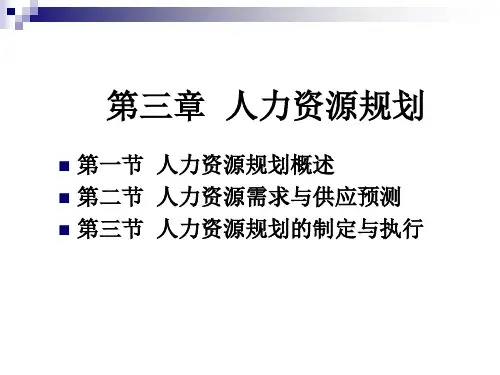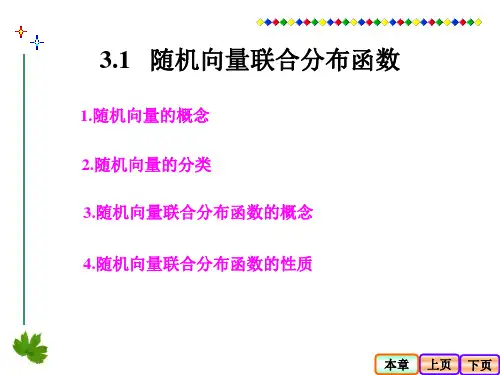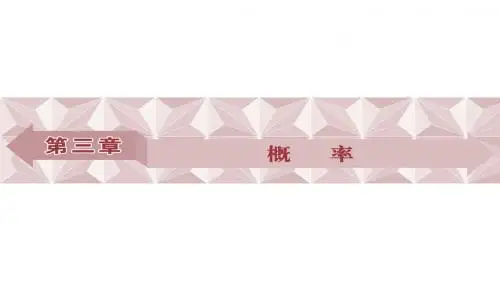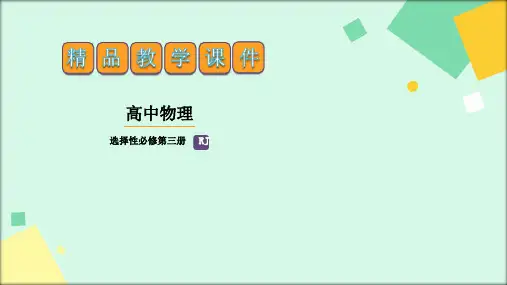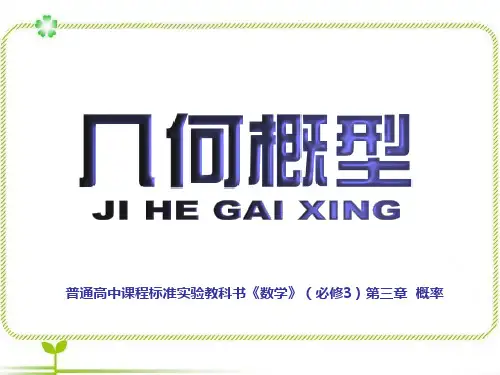3.第三章
- 格式:ppt
- 大小:553.00 KB
- 文档页数:45
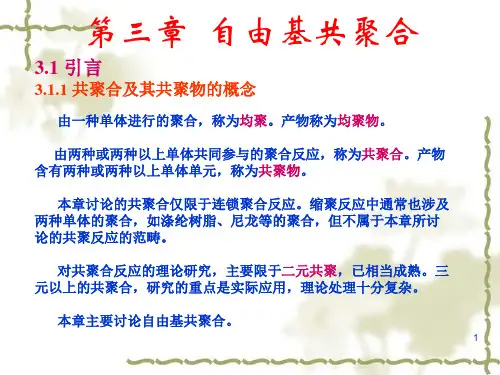
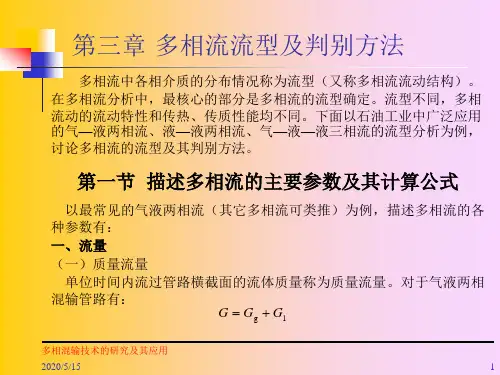
![[3] 第三章 复变函数的积分](https://uimg.taocdn.com/a824536c172ded630a1cb66e.webp)
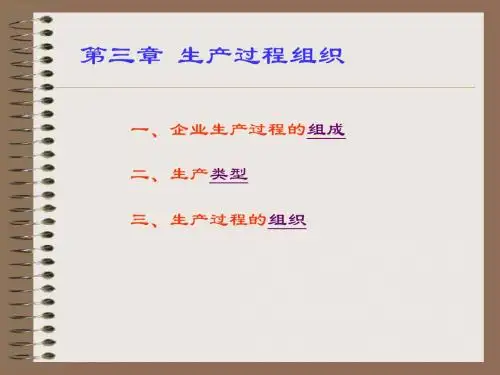
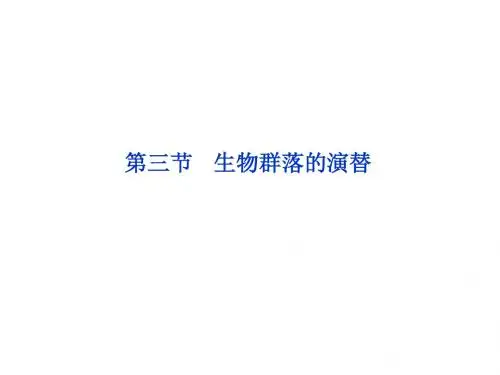
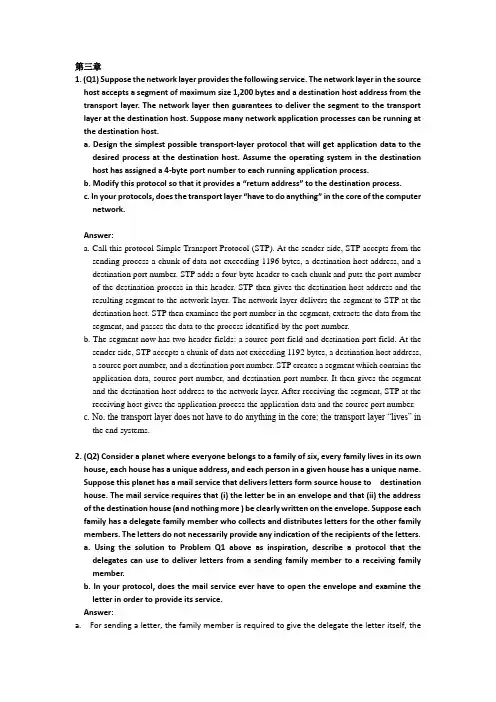
第三章1. (Q1) Suppose the network layer provides the following service. The network layer in the source host accepts a segment of maximum size 1,200 bytes and a destination host address from the transport layer. The network layer then guarantees to deliver the segment to the transport layer at the destination host. Suppose many network application processes can be running at the destination host.a. Design the simplest possible transport-layer protocol that will get application data to thedesired process at the destination host. Assume the operating system in the destination host has assigned a 4-byte port number to each running application process.b. Modify this protocol so that it provides a “return address” to the destination process.c. In your protocols, does the transport layer “have to do anything” in the core of the computernetwork.Answer:a. Call this protocol Simple Transport Protocol (STP). At the sender side, STP accepts from thesending process a chunk of data not exceeding 1196 bytes, a destination host address, and a destination port number. STP adds a four-byte header to each chunk and puts the port number of the destination process in this header. STP then gives the destination host address and the resulting segment to the network layer. The network layer delivers the segment to STP at the destination host. STP then examines the port number in the segment, extracts the data from the segment, and passes the data to the process identified by the port number.b. The segment now has two header fields: a source port field and destination port field. At thesender side, STP accepts a chunk of data not exceeding 1192 bytes, a destination host address,a source port number, and a destination port number. STP creates a segment which contains theapplication data, source port number, and destination port number. It then gives the segment and the destination host address to the network layer. After receiving the segment, STP at the receiving host gives the application process the application data and the source port number.c. No, the transport layer does not have to do anything in the core; the transport layer “lives” inthe end systems.2. (Q2) Consider a planet where everyone belongs to a family of six, every family lives in its own house, each house has a unique address, and each person in a given house has a unique name. Suppose this planet has a mail service that delivers letters form source house to destination house. The mail service requires that (i) the letter be in an envelope and that (ii) the address of the destination house (and nothing more ) be clearly written on the envelope. Suppose each family has a delegate family member who collects and distributes letters for the other family members. The letters do not necessarily provide any indication of the recipients of the letters.a. Using the solution to Problem Q1 above as inspiration, describe a protocol that thedelegates can use to deliver letters from a sending family member to a receiving family member.b. In your protocol, does the mail service ever have to open the envelope and examine theletter in order to provide its service.Answer:a.For sending a letter, the family member is required to give the delegate the letter itself, theaddress of the destination house, and the name of the recipient. The delegate clearly writes the recipient’s name on the top of the letter. The delegate then puts the letter in an e nvelope and writes the address of the destination house on the envelope. The delegate then gives the letter to the planet’s mail service. At the receiving side, the delegate receives the letter from the mail service, takes the letter out of the envelope, and takes note of the recipient name written at the top of the letter. The delegate than gives the letter to the family member with this name.b.No, the mail service does not have to open the envelope; it only examines the address on theenvelope.3. (Q3) Describe why an application developer might choose to run an application over UDP rather than TCP.Answer:An application developer may not want its application to use TCP’s congestion control, which can throttle the application’s sending rate at times of congestion. Often, designers of IP telephony and IP videoconference applications choose to run their applications over UDP because they want to avoid TCP’s congestion control. Also, some applications do not need the reliable data transfer provided by TCP.4. (P1) Suppose Client A initiates a Telnet session with Server S. At about the same time, Client B also initiates a Telnet session with Server S. Provide possible source and destination port numbers fora. The segment sent from A to B.b. The segment sent from B to S.c. The segment sent from S to A.d. The segment sent from S to B.e. If A and B are different hosts, is it possible that the source port number in the segment fromA to S is the same as that fromB to S?f. How about if they are the same host?Yes.f No.5. (P2) Consider Figure 3.5 What are the source and destination port values in the segmentsflowing form the server back to the clients’ processes? What are the IP addresses in the network-layer datagrams carrying the transport-layer segments?Answer:Suppose the IP addresses of the hosts A, B, and C are a, b, c, respectively. (Note that a,b,c aredistinct.)To host A: Source port =80, source IP address = b, dest port = 26145, dest IP address = a To host C, left process: Source port =80, source IP address = b, dest port = 7532, dest IP address = cTo host C, right process: Source port =80, source IP address = b, dest port = 26145, dest IP address = c6. (P3) UDP and TCP use 1s complement for their checksums. Suppose you have the followingthree 8-bit bytes: 01101010, 01001111, 01110011. What is the 1s complement of the sum of these 8-bit bytes? (Note that although UDP and TCP use 16-bit words in computing the checksum, for this problem you are being asked to consider 8-bit sums.) Show all work. Why is it that UDP takes the 1s complement of the sum; that is , why not just sue the sum? With the 1s complement scheme, how does the receiver detect errors? Is it possible that a 1-bit error will go undetected? How about a 2-bit error?Answer:One's complement = 1 1 1 0 1 1 1 0.To detect errors, the receiver adds the four words (the three original words and the checksum). If the sum contains a zero, the receiver knows there has been an error. All one-bit errors will be detected, but two-bit errors can be undetected (e.g., if the last digit of the first word is converted to a 0 and the last digit of the second word is converted to a 1).7. (P4) Suppose that the UDP receiver computes the Internet checksum for the received UDPsegment and finds that it matches the value carried in the checksum field. Can the receiver be absolutely certain that no bit errors have occurred? Explain.Answer:No, the receiver cannot be absolutely certain that no bit errors have occurred. This is because of the manner in which the checksum for the packet is calculated. If the corresponding bits (that would be added together) of two 16-bit words in the packet were 0 and 1 then even if these get flipped to 1 and 0 respectively, the sum still remains the same. Hence, the 1s complement the receiver calculates will also be the same. This means the checksum will verify even if there was transmission error.8. (P5) a. Suppose you have the following 2 bytes: 01001010 and 01111001. What is the 1scomplement of sum of these 2 bytes?b. Suppose you have the following 2 bytes: 11110101 and 01101110. What is the 1s complement of sum of these 2 bytes?c. For the bytes in part (a), give an example where one bit is flipped in each of the 2 bytesand yet the 1s complement doesn’t change.0 1 0 1 0 1 0 1 + 0 1 1 1 0 0 0 0 1 1 0 0 0 1 0 1 1 1 0 0 0 1 0 1 + 0 1 0 0 1 1 0 0 0 0 0 1 0 0 0 1Answer:a. Adding the two bytes gives 10011101. Taking the one’s complement gives 01100010b. Adding the two bytes gives 00011110; the one’s complement gives 11100001.c. first byte = 00110101 ; second byte = 01101000.9. (P6) Consider our motivation for correcting protocol rdt2.1. Show that the receiver, shown inthe figure on the following page, when operating with the sender show in Figure 3.11, can lead the sender and receiver to enter into a deadlock state, where each is waiting for an event that will never occur.Answer:Suppose the sender is in state “Wait for call 1 from above” and the receiver (the receiver shown in the homework problem) is in state “Wait for 1 from below.” The sender sends a packet with sequence number 1, and transitions to “Wait for ACK or NAK 1,” waiting for an ACK or NAK. Suppose now the receiver receives the packet with sequence number 1 correctly, sends an ACK, and transitions to state “Wait for 0 from below,” waiting for a data packet with sequence number 0. However, the ACK is corrupted. When the rdt2.1 sender gets the corrupted ACK, it resends the packet with sequence number 1. However, the receiver is waiting for a packet with sequence number 0 and (as shown in the home work problem) always sends a NAK when it doesn't get a packet with sequence number 0. Hence the sender will always be sending a packet with sequence number 1, and the receiver will always be NAKing that packet. Neither will progress forward from that state.10. (P7) Draw the FSM for the receiver side of protocol rdt3.0Answer:The sender side of protocol rdt3.0 differs from the sender side of protocol 2.2 in that timeouts have been added. We have seen that the introduction of timeouts adds the possibility of duplicate packets into the sender-to-receiver data stream. However, the receiver in protocol rdt.2.2 can already handle duplicate packets. (Receiver-side duplicates in rdt 2.2 would arise if the receiver sent an ACK that was lost, and the sender then retransmitted the old data). Hence the receiver in protocol rdt2.2 will also work as the receiver in protocol rdt 3.0.11. (P8) In protocol rdt3.0, the ACK packets flowing from the receiver to the sender do not havesequence numbers (although they do have an ACK field that contains the sequence number of the packet they are acknowledging). Why is it that our ACK packets do not require sequence numbers?Answer:To best Answer this question, consider why we needed sequence numbers in the first place. We saw that the sender needs sequence numbers so that the receiver can tell if a data packet is a duplicate of an already received data packet. In the case of ACKs, the sender does not need this info (i.e., a sequence number on an ACK) to tell detect a duplicate ACK. A duplicate ACK is obvious to the rdt3.0 receiver, since when it has received the original ACK it transitioned to the next state. The duplicate ACK is not the ACK that the sender needs and hence is ignored by the rdt3.0 sender.12. (P9) Give a trace of the operation of protocol rdt3.0 when data packets and acknowledgmentpackets are garbled. Your trace should be similar to that used in Figure 3.16Answer:Suppose the protocol has been in operation for some time. The sender is in state “Wait for call fro m above” (top left hand corner) and the receiver is in state “Wait for 0 from below”. The scenarios for corrupted data and corrupted ACK are shown in Figure 1.13. (P10) Consider a channel that can lose packets but has a maximum delay that is known.Modify protocol rdt2.1 to include sender timeout and retransmit. Informally argue whyyour protocol can communicate correctly over this channel.Answer:Here, we add a timer, whose value is greater than the known round-trip propagation delay. We add a timeout event to the “Wait for ACK or NAK0” and “Wait for ACK or NAK1” states. If the timeout event occurs, the most recently transmitted packet is retransmitted. Let us see why this protocol will still work with the rdt2.1 receiver.• Suppose the timeout is caused by a lost data packet, i.e., a packet on the senderto- receiver channel. In this case, the receiver never received the previous transmission and, from the receiver's viewpoint, if the timeout retransmission is received, it look exactly the same as if the original transmission is being received.• Suppose now that an ACK is lost. The receiver will eventually retransmit the packet on atimeout. But a retransmission is exactly the same action that is take if an ACK is garbled. Thus the sender's reaction is the same with a loss, as with a garbled ACK. The rdt 2.1 receiver can already handle the case of a garbled ACK.14. (P11) Consider the rdt3.0 protocol. Draw a diagram showing that if the network connectionbetween the sender and receiver can reorder messages (that is, that two messagespropagating in the medium between the sender and receiver can be reordered), thenthe alternating-bit protocol will not work correctly (make sure you clearly identify thesense in which it will not work correctly). Your diagram should have the sender on theleft and the receiver on the right, with the time axis running down the page, showingdata (D) and acknowledgement (A) message exchange. Make sure you indicate thesequence number associated with any data or acknowledgement segment.Answer:15. (P12) The sender side of rdt3.0 simply ignores (that is, takes no action on) all received packetsthat are either in error or have the wrong value in the ack-num field of anacknowledgement packet. Suppose that in such circumstances, rdt3.0 were simply toretransmit the current data packet . Would the protocol still work? (hint: Consider whatwould happen if there were only bit errors; there are no packet losses but prematuretimeout can occur. Consider how many times the nth packet is sent, in the limit as napproaches infinity.)Answer:The protocol would still work, since a retransmission would be what would happen if the packet received with errors has actually been lost (and from the receiver standpoint, it never knows which of these events, if either, will occur). To get at the more subtle issue behind this question, one has to allow for premature timeouts to occur. In this case, if each extra copy of the packet is ACKed and each received extra ACK causes another extra copy of the current packet to be sent, the number of times packet n is sent will increase without bound as n approaches infinity.16. (P13) Consider a reliable data transfer protocol that uses only negative acknowledgements.Suppose the sender sends data only infrequently. Would a NAK-only protocol bepreferable to a protocol that uses ACKs? Why? Now suppose the sender has a lot ofdata to send and the end to end connection experiences few losses. In this second case ,would a NAK-only protocol be preferable to a protocol that uses ACKs? Why?Answer:In a NAK only protocol, the loss of packet x is only detected by the receiver when packetx+1 is received. That is, the receivers receives x-1 and then x+1, only when x+1 is received does the receiver realize that x was missed. If there is a long delay between the transmission of x and the transmission of x+1, then it will be a long time until x can be recovered, under a NAK only protocol.On the other hand, if data is being sent often, then recovery under a NAK-only scheme could happen quickly. Moreover, if errors are infrequent, then NAKs are only occasionally sent (when needed), and ACK are never sent – a significant reduction in feedback in the NAK-only case over the ACK-only case.17. (P14) Consider the cross-country example shown in Figure 3.17. How big would the windowsize have to be for the channel utilization to be greater than 80 percent?Answer:It takes 8 microseconds (or 0.008 milliseconds) to send a packet. in order for the sender to be busy 90 percent of the time, we must have util = 0.9 = (0.008n) / 30.016 or n approximately 3377 packets.18. (P15) Consider a scenario in which Host A wants to simultaneously send packets to Host Band C. A is connected to B and C via a broadcast channel—a packet sent by A is carriedby the channel to both B and C. Suppose that the broadcast channel connecting A, B,and C can independently lose and corrupt packets (and so, for example, a packet sentfrom A might be correctly received by B, but not by C). Design a stop-and-wait-likeerror-control protocol for reliable transferring packets from A to B and C, such that Awill not get new data from the upper layer until it knows that B and C have correctlyreceived the current packet. Give FSM descriptions of A and C. (Hint: The FSM for Bshould be essentially be same as for C.) Also, give a description of the packet format(s)used.Answer:In our solution, the sender will wait until it receives an ACK for a pair of messages (seqnum and seqnum+1) before moving on to the next pair of messages. Data packets have a data field and carry a two-bit sequence number. That is, the valid sequence numbers are 0, 1, 2, and 3. (Note: you should think about why a 1-bit sequence number space of 0, 1 only would not work in the solution below.) ACK messages carry the sequence number of the data packet they are acknowledging.The FSM for the sender and receiver are shown in Figure 2. Note that the sender state records whether (i) no ACKs have been received for the current pair, (ii) an ACK for seqnum (only) has been received, or an ACK for seqnum+1 (only) has been received. In this figure, we assume that theseqnum is initially 0, and that the sender has sent the first two data messages (to get things going).A timeline trace for the sender and receiver recovering from a lost packet is shown below:Sender Receivermake pair (0,1)send packet 0Packet 0 dropssend packet 1receive packet 1buffer packet 1send ACK 1receive ACK 1(timeout)resend packet 0receive packet 0deliver pair (0,1)send ACK 0receive ACK 019. (P16) Consider a scenario in which Host A and Host B want to send messages to Host C. HostsA and C are connected by a channel that can lose and corrupt (but not reorder)message.Hosts B and C are connected by another channel (independent of the channelconnecting A and C) with the same properties. The transport layer at Host C shouldalternate in delivering messages from A and B to the layer above (that is, it should firstdeliver the data from a packet from A, then the data from a packet from B, and so on).Design a stop-and-wait-like error-control protocol for reliable transferring packets fromA toB and C, with alternating delivery atC as described above. Give FSM descriptionsof A and C. (Hint: The FSM for B should be essentially be same as for A.) Also, give adescription of the packet format(s) used.Answer:This problem is a variation on the simple stop and wait protocol (rdt3.0). Because the channel may lose messages and because the sender may resend a message that one of the receivers has already received (either because of a premature timeout or because the other receiver has yet to receive the data correctly), sequence numbers are needed. As in rdt3.0, a 0-bit sequence number will suffice here.The sender and receiver FSM are shown in Figure 3. In this problem, the sender state indicates whether the sender has received an ACK from B (only), from C (only) or from neither C nor B. The receiver state indicates which sequence number the receiver is waiting for.20. (P17) In the generic SR protocol that we studied in Section 3.4.4, the sender transmits amessage as soon as it is available (if it is in the window) without waiting for anacknowledgment. Suppose now that we want an SR protocol that sends messages twoat a time. That is , the sender will send a pair of messages and will send the next pairof messages only when it knows that both messages in the first pair have been receivercorrectly.Suppose that the channel may lose messages but will not corrupt or reorder messages.Design an error-control protocol for the unidirectional reliable transfer of messages.Give an FSM description of the sender and receiver. Describe the format of the packetssent between sender and receiver, and vice versa. If you use any procedure calls otherthan those in Section 3.4(for example, udt_send(), start_timer(), rdt_rcv(), and soon) ,clearly state their actions. Give an example (a timeline trace of sender and receiver)showing how your protocol recovers from a lost packet.Answer:21. (P18) Consider the GBN protocol with a sender window size of 3 and a sequence numberrange of 1024. Suppose that at time t, the next in-order packet that the receiver isexpecting has a sequence number of k. Assume that the medium does not reordermessages. Answer the following questions:a. What are the possible sets of sequence number inside the sender’s window at timet? Justify your Answer.b .What are all possible values of the ACK field in all possible messages currentlypropagating back to the sender at time t? Justify your Answer.Answer:a.Here we have a window size of N=3. Suppose the receiver has received packet k-1, and hasACKed that and all other preceeding packets. If all of these ACK's have been received by sender, then sender's window is [k, k+N-1]. Suppose next that none of the ACKs have been received at the sender. In this second case, the sender's window contains k-1 and the N packets up to and including k-1. The sender's window is thus [k- N,k-1]. By these arguments, the senders window is of size 3 and begins somewhere in the range [k-N,k].b.If the receiver is waiting for packet k, then it has received (and ACKed) packet k-1 and the N-1packets before that. If none of those N ACKs have been yet received by the sender, then ACKmessages with values of [k-N,k-1] may still be propagating back. Because the sender has sent packets [k-N, k-1], it must be the case that the sender has already received an ACK for k-N-1.Once the receiver has sent an ACK for k-N-1 it will never send an ACK that is less that k-N-1.Thus the range of in-flight ACK values can range from k-N-1 to k-1.22. (P19) Answer true or false to the following questions and briefly justify your Answer.a. With the SR protocol, it is possible for the sender to receive an ACK for a packet thatfalls outside of its current window.b. With CBN, it is possible for the sender to receiver an ACK for a packet that fallsoutside of its current window.c. The alternating-bit protocol is the same as the SR protocol with a sender and receiverwindow size of 1.d. The alternating-bit protocol is the same as the GBN protocol with a sender andreceiver window size of 1.Answer:a.True. Suppose the sender has a window size of 3 and sends packets 1, 2, 3 at t0 . At t1 (t1 > t0)the receiver ACKS 1, 2, 3. At t2 (t2 > t1) the sender times out and resends 1, 2, 3. At t3 the receiver receives the duplicates and re-acknowledges 1, 2, 3. At t4 the sender receives the ACKs that the receiver sent at t1 and advances its window to 4, 5, 6. At t5 the sender receives the ACKs 1, 2, 3 the receiver sent at t2 . These ACKs are outside its window.b.True. By essentially the same scenario as in (a).c.True.d.True. Note that with a window size of 1, SR, GBN, and the alternating bit protocol arefunctionally equivalent. The window size of 1 precludes the possibility of out-of-order packets (within the window). A cumulative ACK is just an ordinary ACK in this situation, since it can only refer to the single packet within the window.23. (Q4) Why is it that voice and video traffic is often sent over TCP rather than UDP in today’sInternet. (Hint: The Answer we are looking for has nothing to do with TCP’s congestion-control mechanism. )Answer:Since most firewalls are configured to block UDP traffic, using TCP for video and voice traffic lets the traffic though the firewalls24. (Q5) Is it possible for an application to enjoy reliable data transfer even when the applicationruns over UDP? If so, how?Answer:Yes. The application developer can put reliable data transfer into the application layer protocol. This would require a significant amount of work and debugging, however.25. (Q6) Consider a TCP connection between Host A and Host B. Suppose that the TCP segmentstraveling form Host A to Host B have source port number x and destination portnumber y. What are the source and destination port number for the segments travelingform Host B to Host A?Answer:Source port number y and destination port number x.26. (P20) Suppose we have two network entities, A and B. B has a supply of data messages thatwill be sent to A according to the following conventions. When A gets a request fromthe layer above to get the next data (D) message from B, A must send a request (R)message to B on the A-to-B channel. Only when B receives an R message can it send adata (D) message back to A on the B-to-A channel. A should deliver exactly one copy ofeach D message to the layer above. R message can be lost (but not corrupted) in the A-to-B channel; D messages, once sent, are always delivered correctly. The delay alongboth channels is unknown and variable.Design(give an FSM description of) a protocol that incorporates the appropriatemechanisms to compensate for the loss-prone A-to-B channel and implementsmessage passing to the layer above at entity A, as discussed above. Use only thosemechanisms that are absolutely necessary.Answer:Because the A-to-B channel can lose request messages, A will need to timeout and retransmit its request messages (to be able to recover from loss). Because the channel delays are variable and unknown, it is possible that A will send duplicate requests (i.e., resend a request message that has already been received by B). To be able to detect duplicate request messages, the protocol will use sequence numbers. A 1-bit sequence number will suffice for a stop-and-wait type of request/response protocol.A (the requestor) has 4 states:• “Wait for Request 0 from above.” Here the requestor is waiting for a call from above to request a unit of data. When it receives a request from above, it sends a request message, R0, to B, starts a timer and make s a transition to the “Wait for D0” state. When in the “Wait for Request 0 from above” state, A ign ores anything it receives from B.• “Wait for D0”. Here the requestor is waiting for a D0 data message from B. A timer is always running in this state. If the timer expires, A sends another R0 message, restarts the timer and remains in this state. If a D0 message is received from B, A stops the time and transits to the “Wait for Request 1 from above” state. If A receives a D1 data message while in this state, it is ignored.• “Wait for Request 1 from above.” Here the requestor is again waiting for a call from above to request a unit of data. When it receives a request from above, it sends a request message, R1, to B, starts a timer and makes a transition to the “Wait for D1” state. When in the “Wait for Request 1 from above” state, A ignores anything it receives from B.• “Wait for D1”. Here the requestor is waiting for a D1 data message from B. A timer is always running in this state. If the timer expires, A sends another R1 message, restarts the timer and remains in this state. If a D1 message is received from B, A stops the timer and transits to the “Wait for Request 0 from above” state. If A receives a D0 data message while in this state, it is ignored.The data supplier (B) has only two states:。
